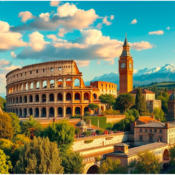21 Best Amazing Places To Explore In Greece
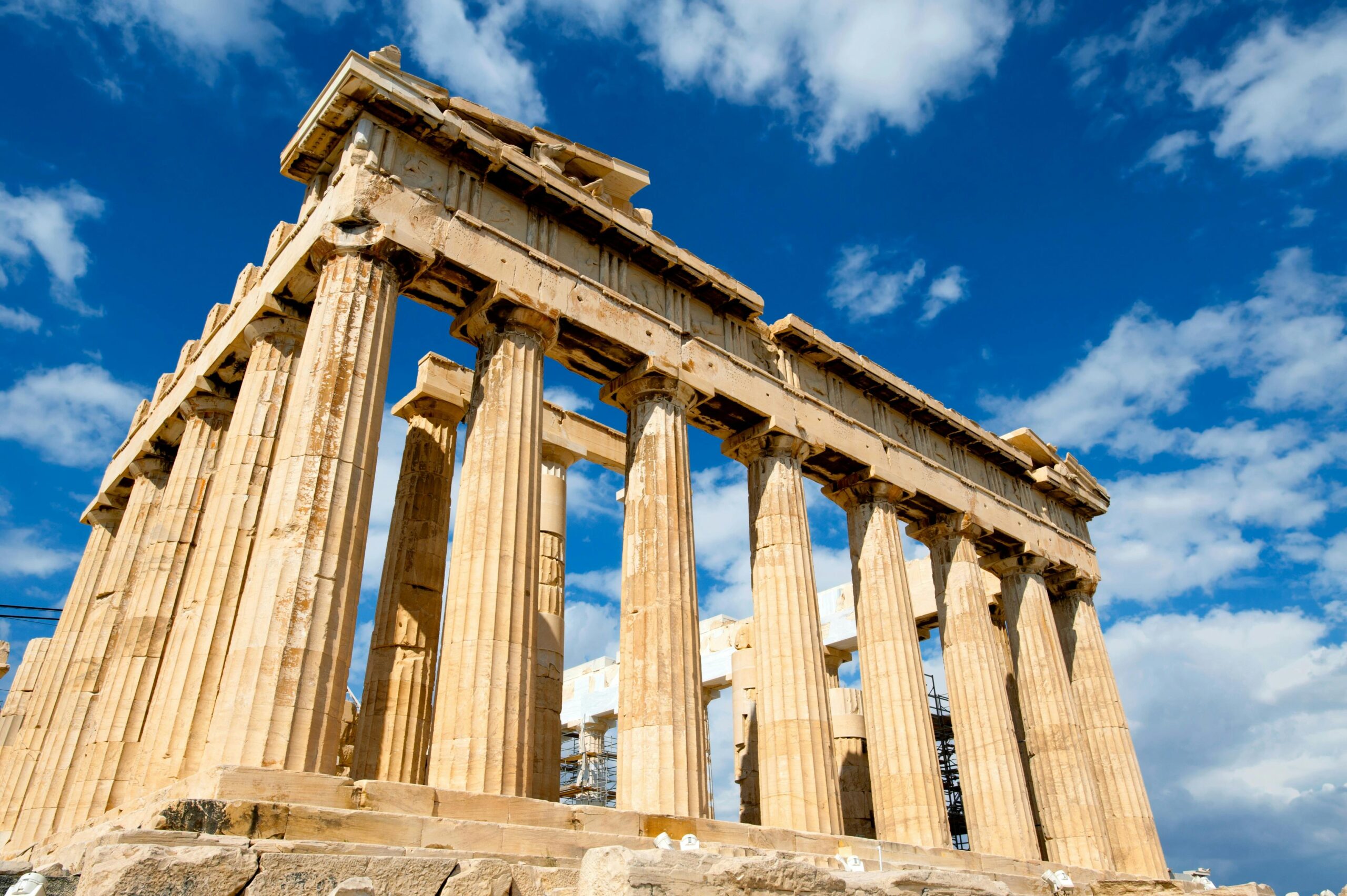
21 Best Amazing Places To Explore In Greece
Greece is renowned for its stunning natural surroundings and enthralling culture. It is home to some of the most significant historical sites in the world as well as almost 6,000 islands. Greece is one of the most popular tourist destinations in Europe.Its because of historic archeological monuments, sand and pebble beaches, cliffs plunging into glistening blue ocean, and pleasant Mediterranean weather.
In addition to Athens, two of the most popular sights in the continental United States are the monasteries of Meteora and Ancient Delphi. But most visitors travel here to take a ferry or plane to one of the islands. The most well-liked ones being Santorini, Mykonos, Zakynthos, Corfu, and Crete. Read the blog, to know the best places to visit in Greece:
Best Places to Visit Greece:
Let’s explore the best places to travelin Greece for tourists:
1. Athens, Greece:
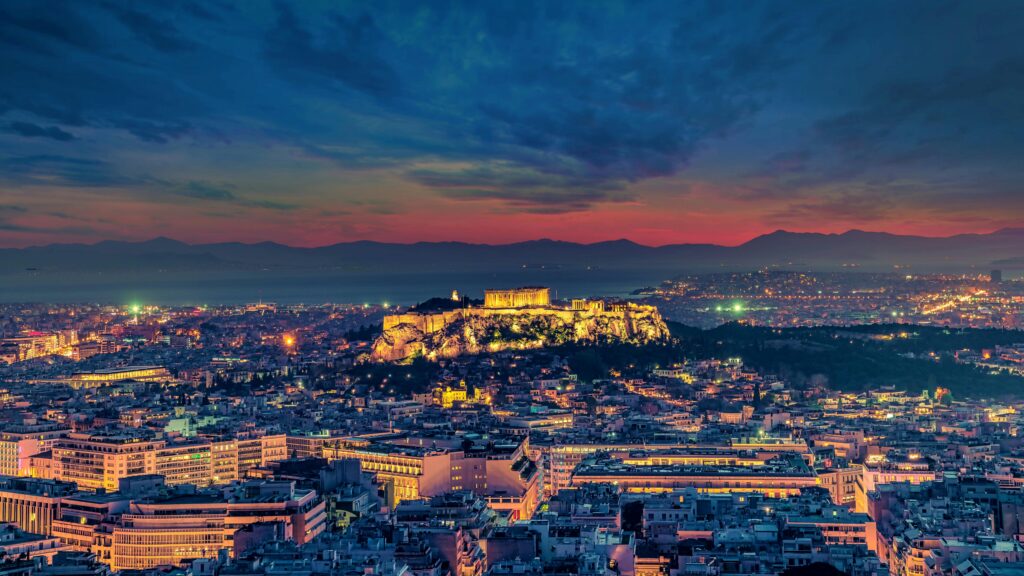
Located in the center of modern Athens, the Acropolis is a rocky mound crowned by three beautiful temples dating back to the 5th century BC. It is widely regarded as the symbol of both Athens and Greece, as well as Western civilization. The most well-known and recognizable is the Parthenon, which was first constructed with 58 columns to support a roof and elaborate frieze and pediments.
While the Parthenon is undoubtedly the main attraction, the Acropolis hilltop offers other breathtaking views as well. Not to be missed are the Propylaea, the Porch of the Caryatids, and the elaborate Temple of Athena Nike. Pull yourself away from the historical sites and head to the edge for sweeping views of the city below and the seven historical hills of Athens.
The Archaeological Promenade is a 2.5-kilometer pedestrian road that skirts the base of the Acropolis and links it to the other main historical sites in the city.
2. Acropolis Museum:
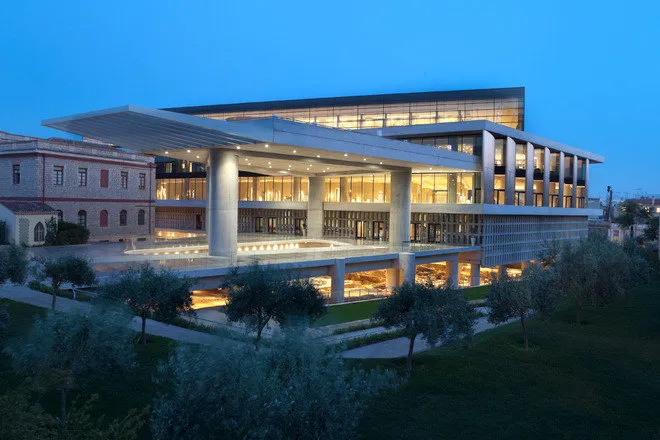
A popular tourist destination is the Acropolis Museum. It is an ultra-modern glass and steel edifice with light-filled exhibition areas designed by Swiss architect Bernard Tschumi, and constructed especially to house ancient artifacts from the Acropolis.
Top attractions include the widely debated Parthenon Marbles, the Caryatids (sculptures of female figures holding up the Erechtheion), and the 6th-century BC statue of a young man carrying a calf on his shoulders. Acropolis views are breathtaking from the cafe-restaurant terrace of the museum.
3. Santorini:
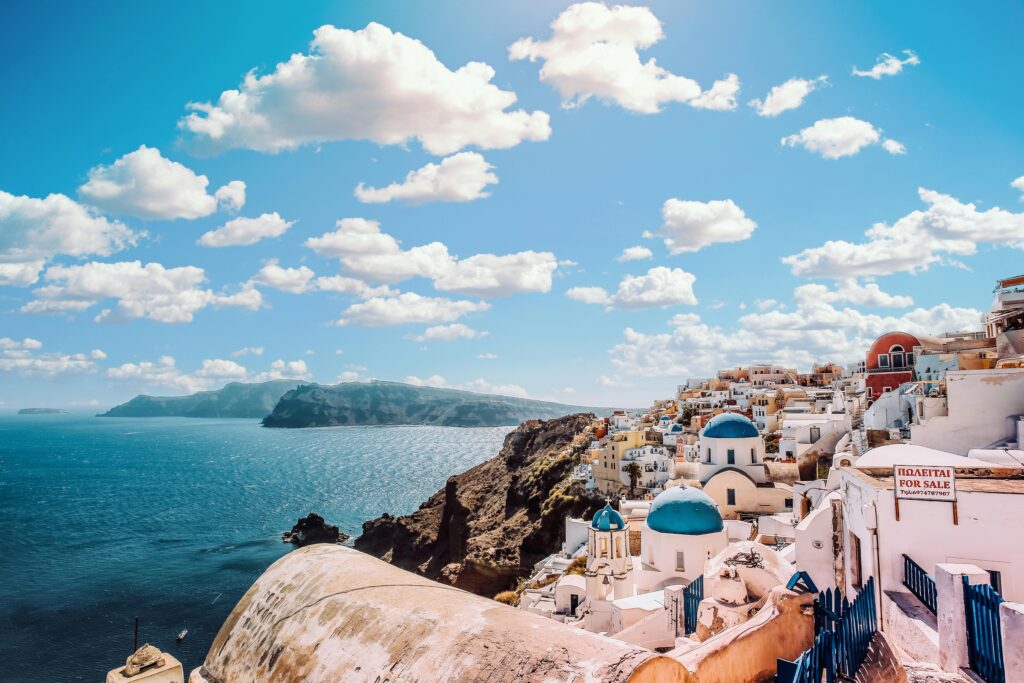
Marvelous Of all the Greek isles, Santorini has the most stunning scenery. It is most famous for the cliff-top settlements of Fira and Oia on the west coast, which seem to dangle over a deep crater filled with blue sea. Fira and Oia, which are composed of whitewashed cubic houses resembling the Cyclades, have been transformed into boutique hotels including infinity pools, making them popular wedding and honeymoon spots.
Activities in Santorini include swimming and tanning on the black beaches with volcanic sand on the east and south shores, as well as exploring the archaeological site of Akrotiri, an ancient Minoan village buried beneath lava after the 3,600-year-old volcanic explosion that formed the caldera. The port of Piraeus in Athens serves the island via catamarans and ferries, and it has its own airport.
Also Read: Best Places to Visit in Europe
4. Mykonos, Greece:
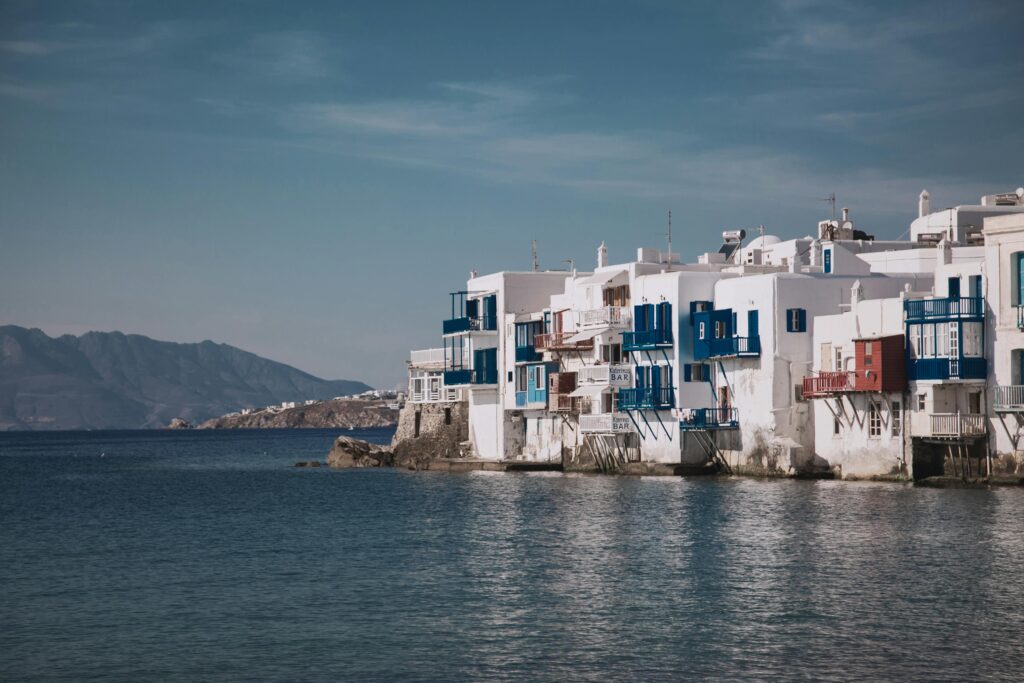
Mykonos regarded by many as the most glamorous island in Greece. Town, known for its upscale boutique hotels, elegant seafood restaurants, and live music venues, is the hub of activity after dark. A whitewashed chapel in Mykonos Town called Paraportiani and a long stretch of sandy beaches on the south coast of the island (accessible from Mykonos Town by bus and taxi boat) are two further points of interest.
The island very well-liked by famous people from elsewhere. There is an airport in Mykonos, and it is connected to the port of Athens, Piraeus, and Rafina via catamaran and ferry.
5. Delphi:
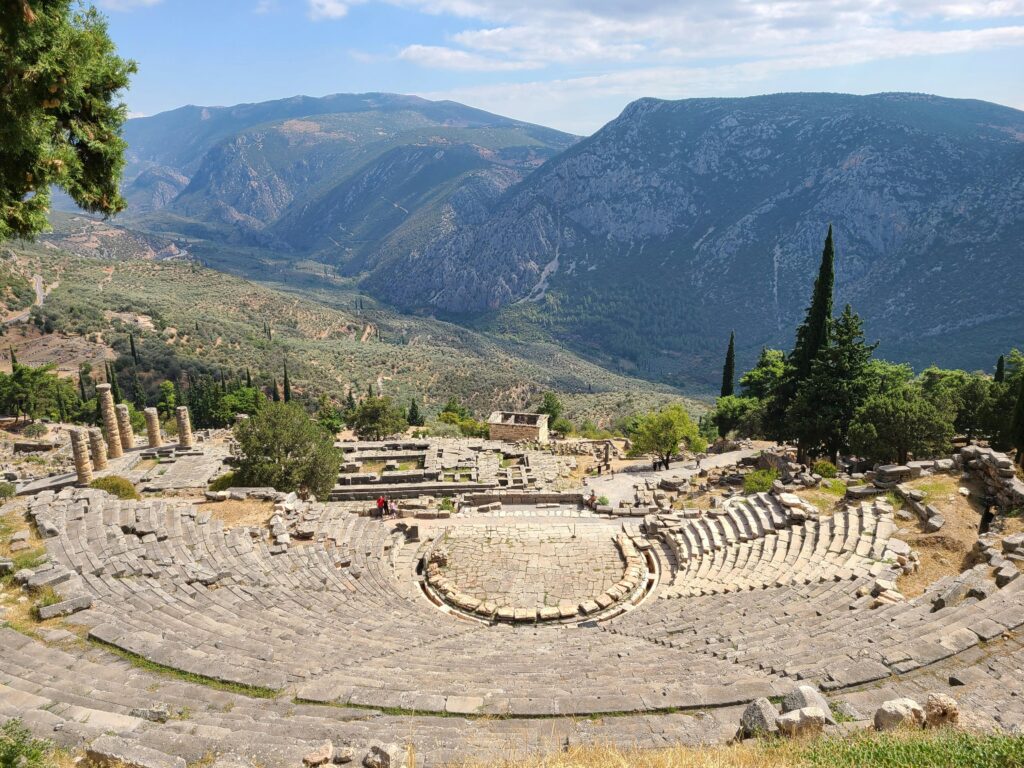
Delphi is a UNESCO World Heritage site on the Greek mainland. The ancient people revered this place, which built on the foothills of Mount Parnassus and overlooked a spectacular gorge, and came here on pilgrimages to worship Apollo, the god of light, prophecy, music, and healing, as well as to consult the fabled Oracle.
It composed of the dilapidated remnants of multiple temples, a theater, and a stadium that date from the second century AD to the eighth century BC. The Delphi Archaeological Museum is located nearby and has an amazing collection of artifacts from the site. 180 kilometers to the northwest of Athens is Delphi.
From Athens, Delphi is roughly a 2.5-hour drive away. If you don’t mind a long day, you can easily do the trip as an overnight or day excursion from the city.
6. Beaches of Crete:
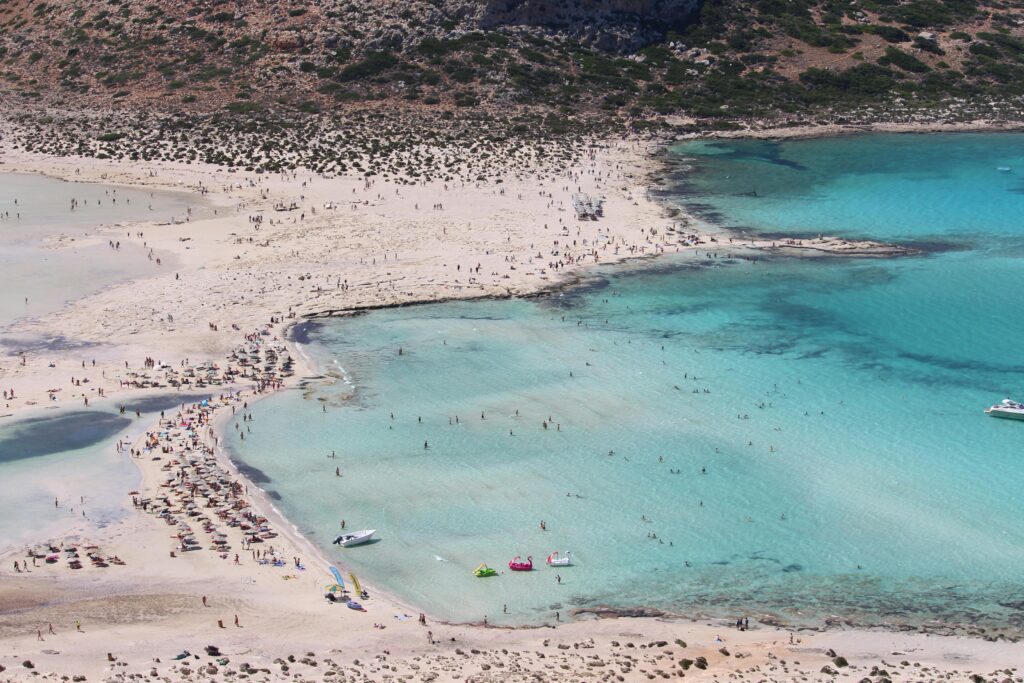
Greece’s most visited holiday destination is the enormous island of Crete. The island is well-known for its top beaches in Greece, which attract tourists from all over the globe. Some of the most well-liked beaches in Crete are wide-open natural expanses lapped by remarkably clear waters. And offer seemingly infinite vistas over the Mediterranean, while others are narrow arcs of sand bordered by eateries and promenades.
However, Crete is not just home to beaches. It includes a good number of important archeological monuments, like as the magnificent Palace of Knossos, which is close to the charming city of Heraklion. Chania, a historic city, and Agios Nikolaos, a laid-back village, both feature lovely old shoreline districts that are ideal for long days spent lost in the views on a café patio.
Get away from the larger towns and explore more secluded beaches and breathtaking mountainous scenery by traveling to tiny settlements on the south coast of Crete, such as Plakias or Matala.
7. Corfu:
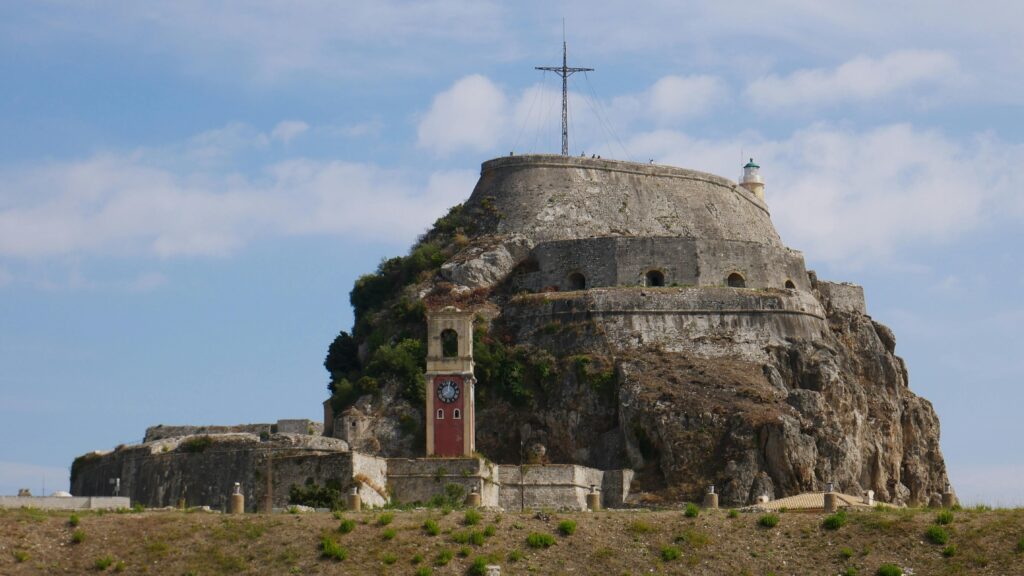
Located off the western coast of the mainland in the Ionian Sea, Corfu is one of the most popular tourist destinations in Greece. Corfu Town, the capital, dominated by the Venetians for several centuries, and recognized as a UNESCO World Heritage site because of its exquisite Italianate architecture. Discover its charming pedestrian-only streets, which lead to the arcaded Liston, a row of vintage cafes, and two 16th-century fortifications.
The island is breathtakingly gorgeous away from the main town, with velvety green hills in the south and rough limestone rocks crashing into the sea in the north. Paleokastritsa, located around 25 kilometers from Corfu Town on the west coast, is the most well-liked beach region. This area is home to a variety of deep, curved bays that provide shade for pebble and sand beaches that open into a crystal-clear blue sea. An airport and ferries from the Greek mainland’s Igoumenitsa and Patras service Corfu. Summertime ferry services from Ancona and Venice also call at this location.
8. Metéora Monasteries:
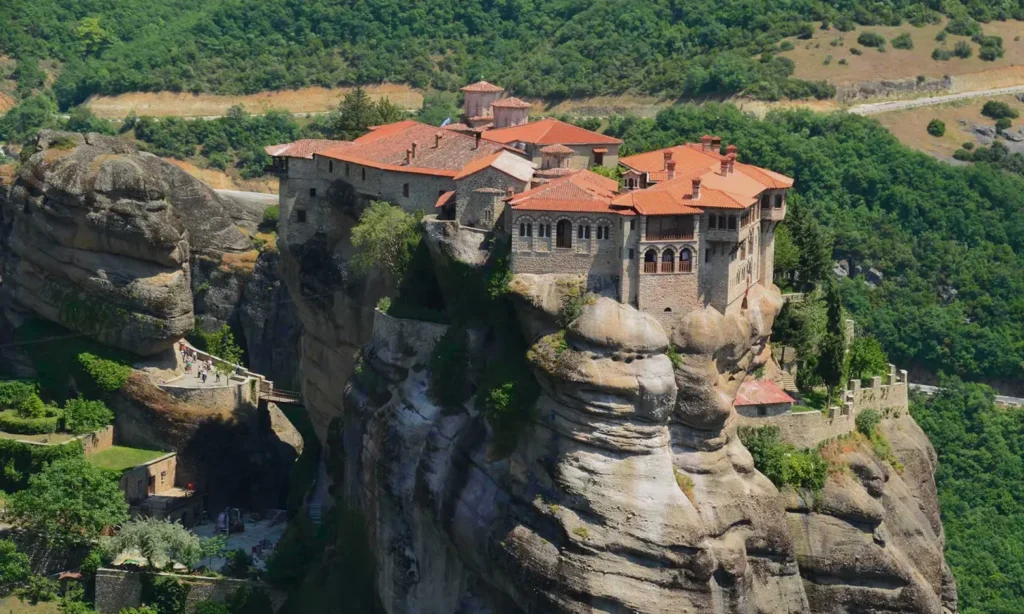
The Thessaly Plain, whose strange rocky outcrops capped with the centuries-old monasteries of Metéora, undoubtedly one of the most interesting places to see in Greece. Six of the monasteries are accessible to the public and are part of the UNESCO World Heritage list. Each monastery reached by ascending multiple flights of stone steps chiseled into the rocks; inside are flickering candles, holy icons, Byzantine paintings, and incense burning.
You must stay in the area for at least one day in order to tour all six monasteries, and opening hours vary. Kalambaka is the town closest to you. This is a nice and laid-back area with family-run restaurants serving traditional fare and tiny hotels, so think about staying here.
9. Rhodes Town:
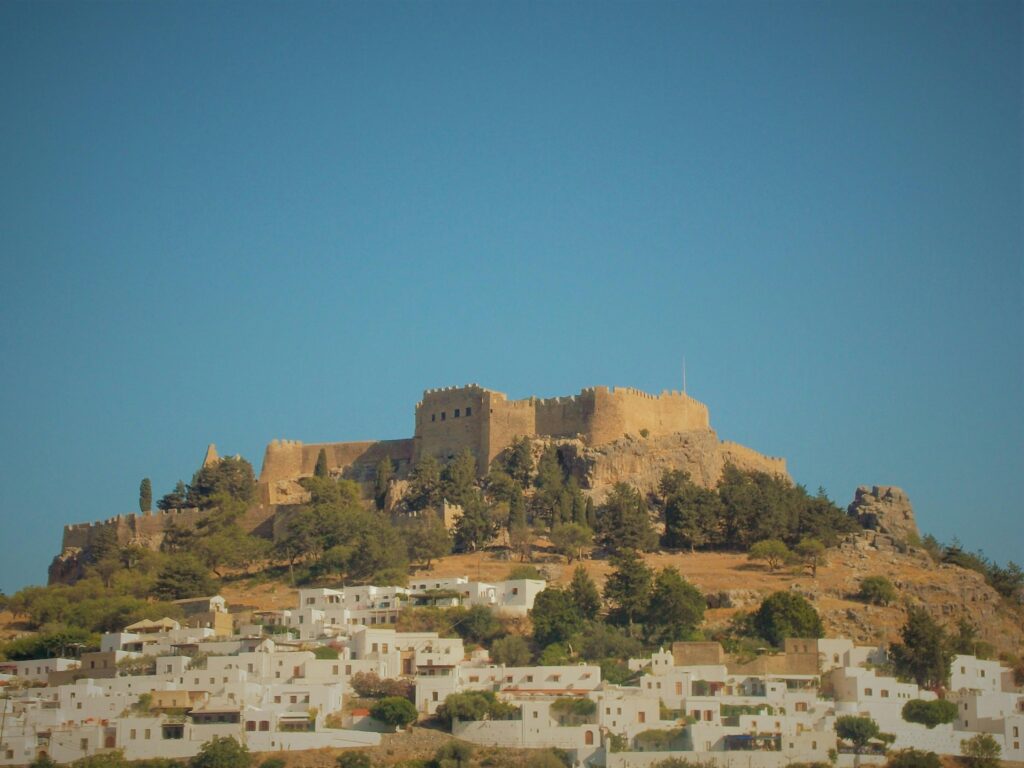
The largest of the Dodecanese islands is Rhodes, which is located near Turkey in the Aegean Sea. Listed by UNESCO, Rhodes Town, the capital, is one of the most popular tourist sites in Greece. It surrounded by a striking defense system, which the Knights of St. John erected after seizing possession of the island in the fourteenth century, and which includes imposing towers and gates.
It’s a pleasure to stroll around the ancient town’s cobblestone streets without cars. The charming hillside seaside village of Lindos and the excursion boat accessible Marmaris on the Turkish shore are two nearby attractions. Rhodes has regular ferries from the port of Piraeus in Athens, as well as an airport.
10. Zákynthos:
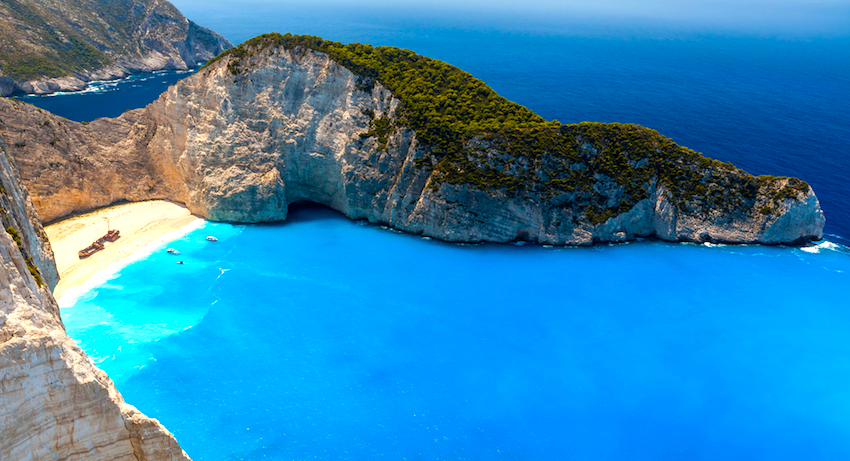
Greece’s second most popular tourist attraction is Zákynthos (Zante) island, which boasts breathtaking beauty from above and below the surrounding sea. Situated in the Ionian Sea, about 16 kilometers off the west coast of the Peloponnese, it is very easily accessible.
This physically fascinating island known for two things: its beautiful sea caverns, such as the blue caverns, off the island’s northern tip, and its pebble and sand beaches, of which Shipwreck Beach is the most well-known. Inside, a mystical glow created by the glittering water reflecting the blue sky’s color onto the cave walls. There are numerous aquatic attractions on this island, the Blue Caves being only one of them. Excellent scuba diving and snorkeling are also available.
11. Samaria Gorge:
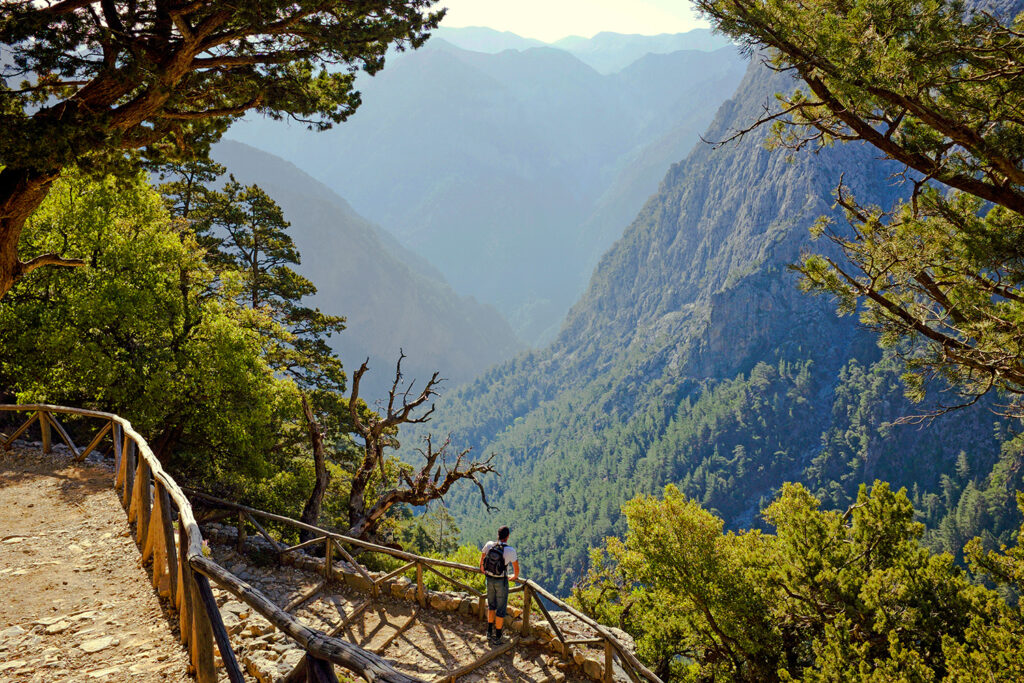
The Samaria Gorge on the island of Crete is a popular destination for outdoor enthusiasts. Stretching from Omalos (1,250 meters) in the White Mountains to Agia Roumeli on the Libyan Sea, it is 16 kilometers long and, at its narrowest point, just four meters wide.
Walking can take five to seven hours, depending on your level of fitness. You should wear appropriate hiking shoes and bring lots of water because it is rough and steep in certain places. The gorge is on the tentative UNESCO list and is located within Samaria National Park. Organized tours leave from Chania and Réthymnon throughout the summer.
12. Nafplio, Greece:
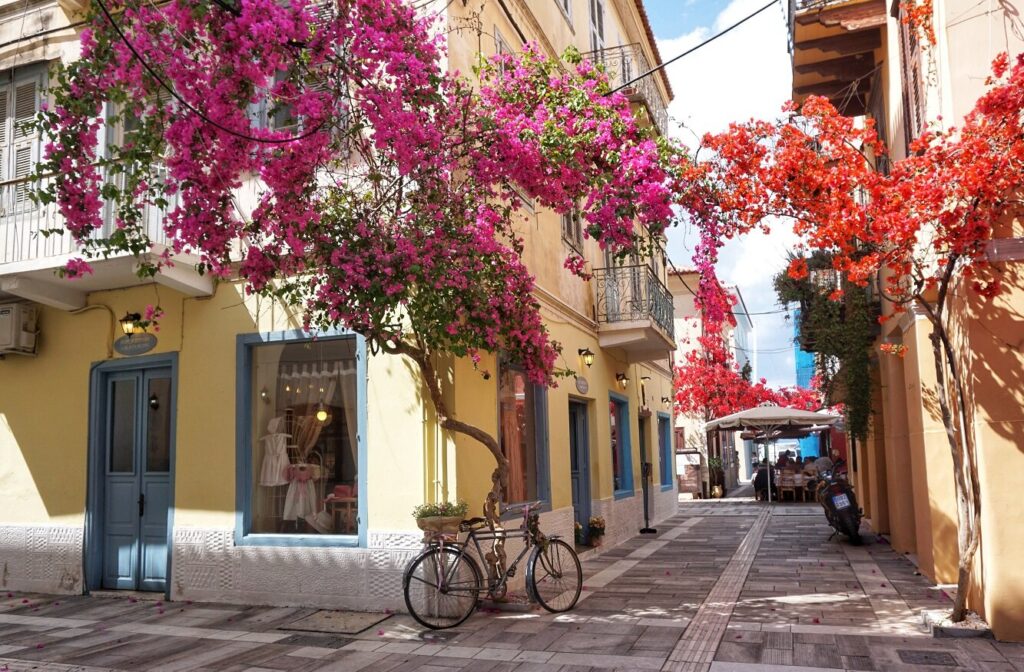
Rich Athenians like spending their weekends in Nafplio, which is frequently regarded as the most beautiful city in Greece. Constructed atop a little peninsula situated on the eastern shore of the Peloponnese, it emerged as the inaugural capital of contemporary Greece in 1828, succumbing to Athens in 1834.
Spend an afternoon or a day exploring the old town, which is car-free and has stately churches and Neoclassical houses. The 18th-century Palamidi Fortress towers over the neighborhood. Tiryns, Epidaurus Theater, and Ancient Corinth are a few of the nearby attractions.
13. Thessaloniki, Greece:
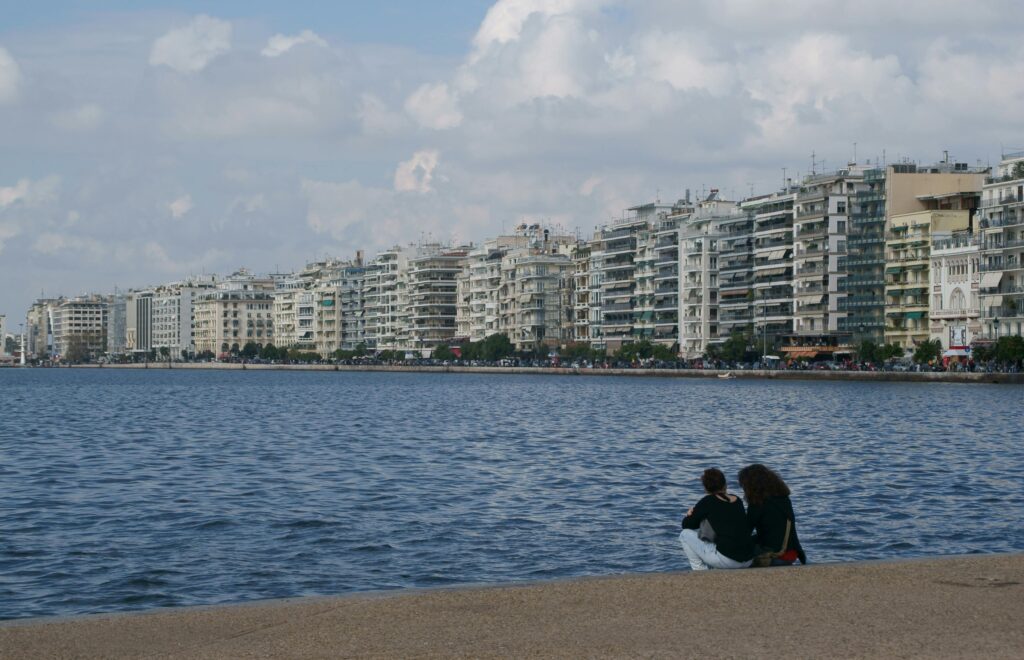
Not being on most people’s lists of places to visit doesn’t seem to bother Thessaloniki. The area and all its sights are theirs to enjoy alone, according to the inhabitants. The major sights to view are the UNESCO-listed Byzantine churches, although there are also several Roman buildings (such as the 4th-century Rotunda and the Triumphal Arch of Galerius), the 15th-century White Tower on the beachfront, and a first-rate Byzantine Museum that are well worth exploring.
Greece’s second-largest city, after Athens, is Thessaloniki (Salonica), which is located in the north and overlooks the Aegean Sea. It was founded around 316 BC because of its proximity to both Bulgaria and Turkey, and it has long been a meeting point for many religious and cultural traditions.
The best day trip destination from Thessaloniki is Mount Olympus, which is Greece’s tallest peak. This striking natural site is about 80 kilometers distant on well-maintained roads, and it is worth the trip. The most well-liked hiking routes start close to Prionia.
14. Corinth Canal:
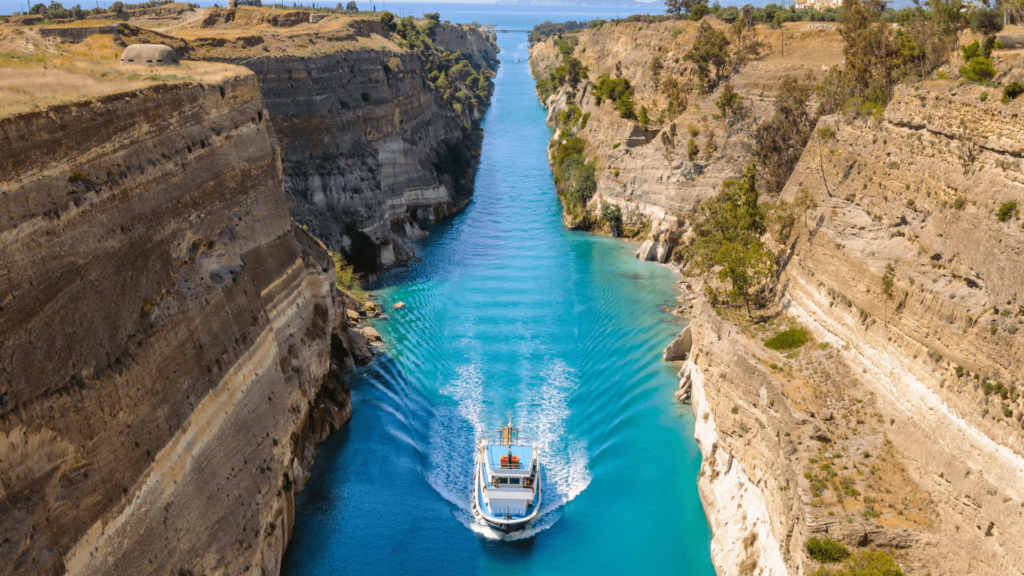
Make sure to stop at the overlook above the Corinth Canal as you approach the Peloponnese Peninsula on the comparatively flat highway 8. First imagined and attempted in the year 1 CE, this canal was eventually completed in the year 1883. Regretfully, the canal never proved to be very successful or profitable for its builders.
After parking your car, stroll across the bridge and consider how the canal’s initial architects were able to chisel a path through the unyielding rock.
15. Mount Olympus, Greece:
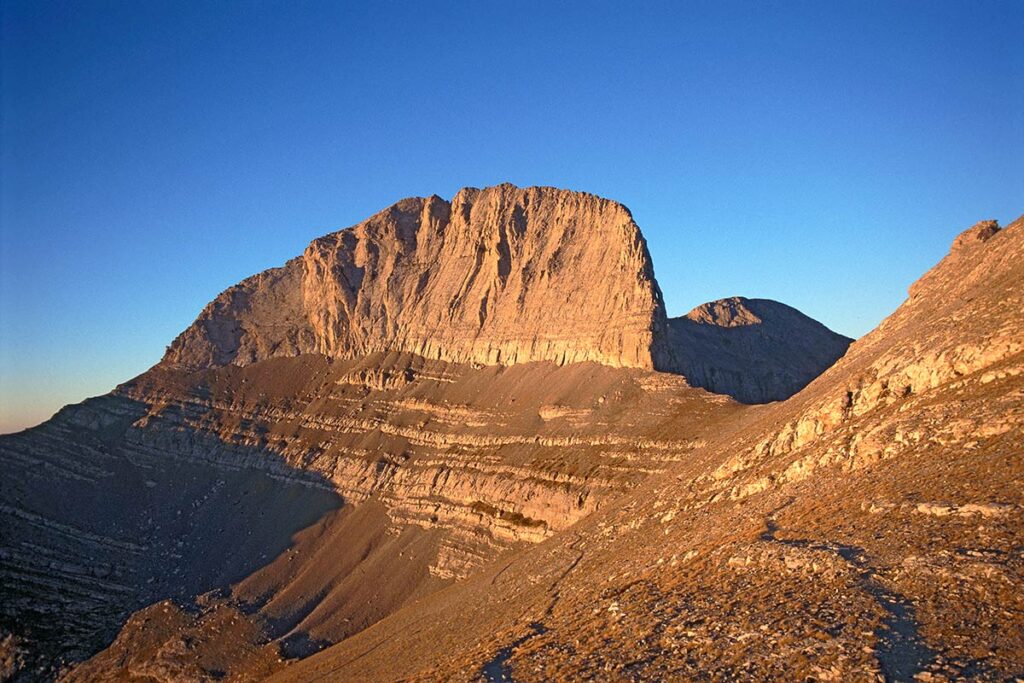
Approximately midway between Athens and Thessaloniki is Mount Olympus, the renowned residence of the god Zeus. At 2,918 meters, this mountain towers above the surrounding landscape and is a popular summer pleasure area.
Although most hikers choose the two-day, one-night Priona trek, there are three hiking trails that lead to the summit. The views are amazing from the summit and well worth the effort to reach. This trek doesn’t require any specialized gear; all you need is a nice assortment of clothes, strong hiking boots, and an adventurous spirit.
16. Palace of Knossos:
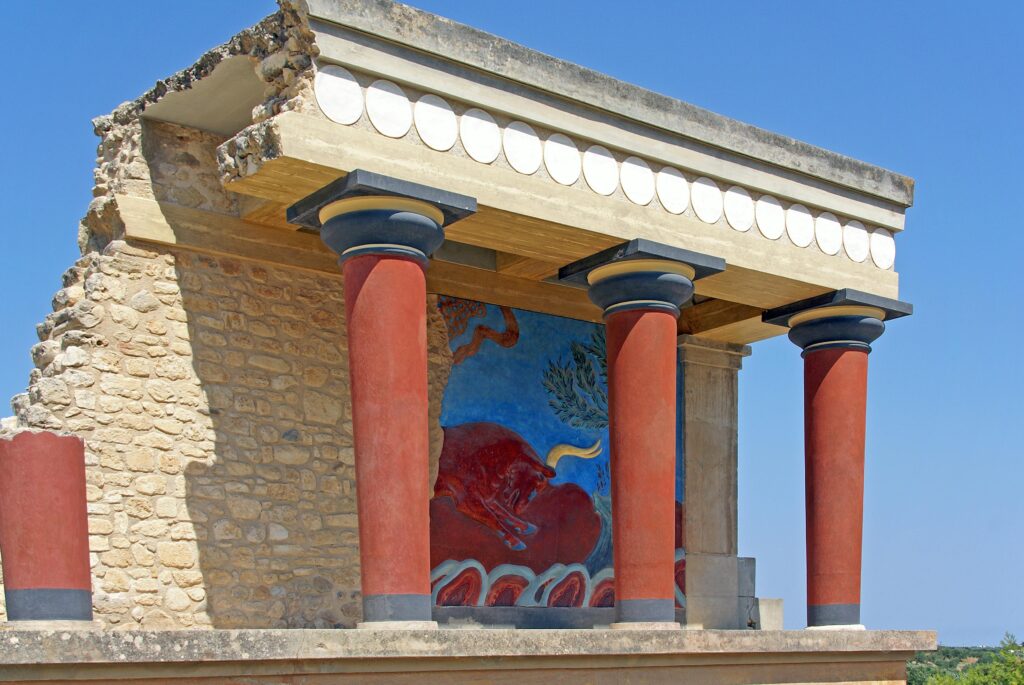
The Palace of Knossos, one of the most important archaeological monuments in Greece, is a must-see while traveling to Crete. Dating back to the Late Minoan era, the site has undergone extensive restoration. Much like many Greek archeological sites, the standing structures offer you a realistic idea of what this place originally looked like, but some parts do take a little imagination.
The location thoughtfully designed, featuring walkways that meander past the primary structures and plazas. Make sure to observe the vibrant murals on several of the larger buildings close to the walkway’s terminus.
One of the principal entry points to Crete, Heraklion, is not far from the Palace of Knossos. It is simple to book tours.
17. Mycenae:
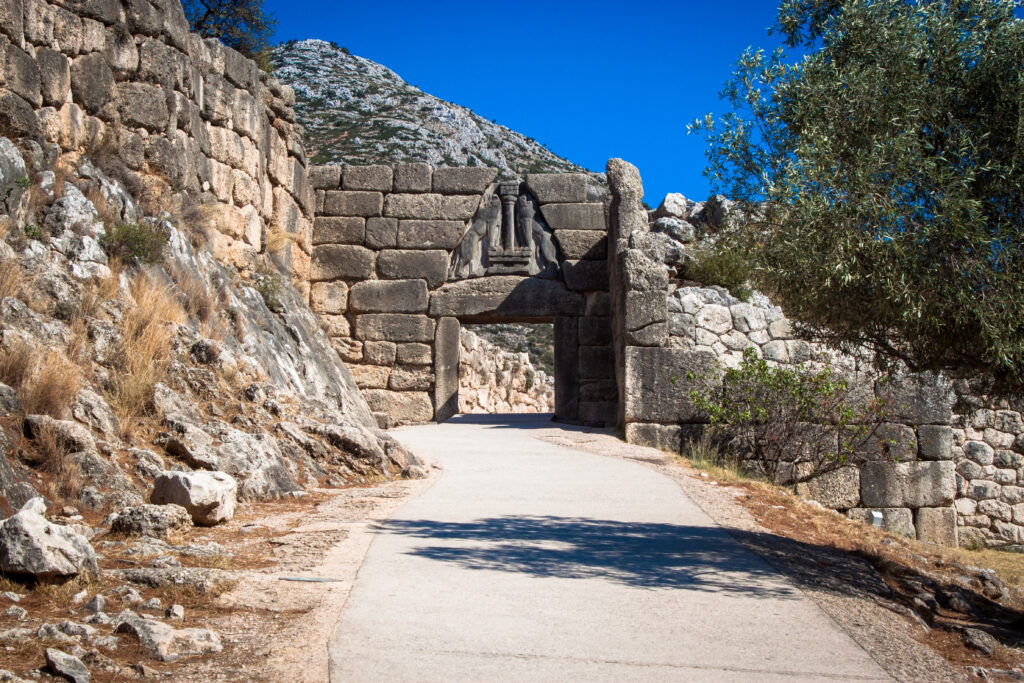
Greek history enthusiasts should not miss seeing the magnificent citadel of Mycenae, one of the best archeological sites south of Athens. Located at the pinnacle of the Mycenaean civilization, approximately 1350 BCE, Mycenae is a spectacular hilltop site.
The magnificent Lion Gate is one of the main attractions at Mycenae. The gate, which is set into the hillside, has a rectangular doorway covered with precisely inlaid stones. Heinrich Schliemann, a late 19th-century explorer, discovered the renowned gold mask at this location. Enter the striking Treasury of Atreus and take a seat if the sun is starting to get too much for you.
18. Paros, Greece:
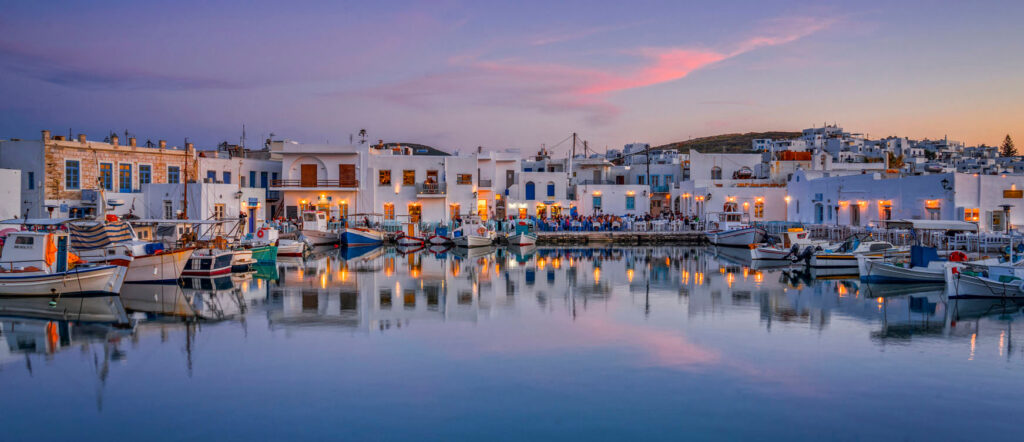
Sometimes, ferry passengers visiting the Cyclades with the intention of seeing the more well-known Santorini Island fail to include the island of Paros. This is a mistake, though. Everything that the busier islands further south and north have to offer is available on this relaxed island. You’ll discover here, away from the tourists, the same whitewashed towns sitting on the waterfront with patios full of grinning and laughing customers.
There are plenty of beautiful beaches and interesting historical places to discover in Paros. It’s also a great place to go if you’re trying to cut expenditures because lodging is less expensive here.
19. Naxos, Greece:
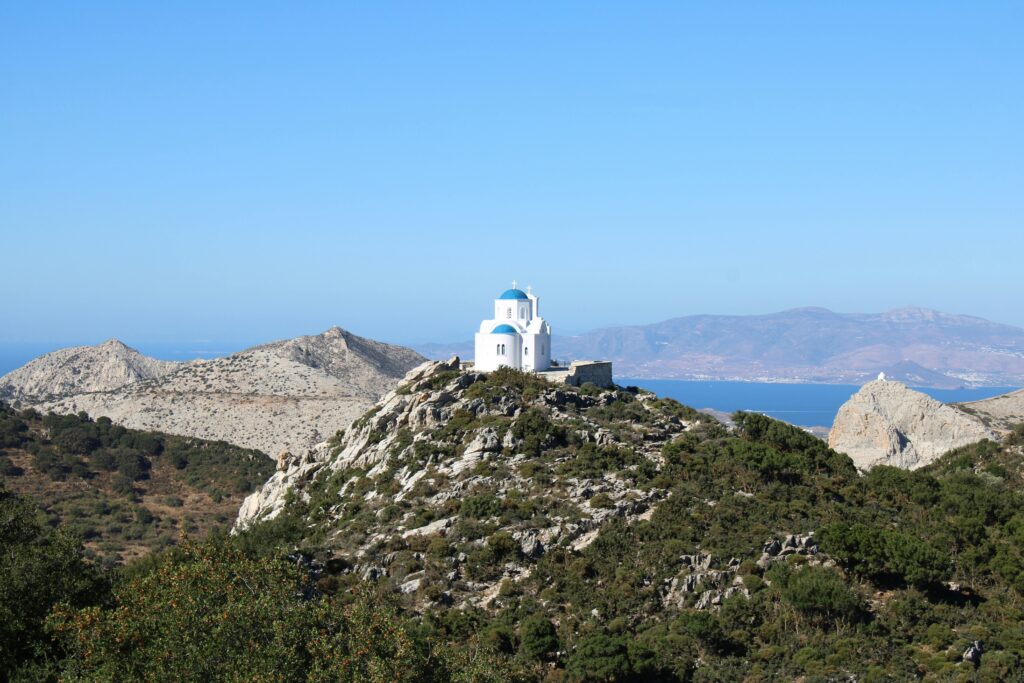
Naxos, another well-liked vacation spot, is one of the bigger Cycladic islands. Discovering this vast island is an enjoyable experience, and it is less crowded than destinations like Santorini or Mykonos. While touring, the little settlements of Filoti, Halki, and Apiranthos are a few must-sees.
Spend some time exploring Chora, Naxos’ main town, particularly the Kastro neighborhood. Here are lovely eateries with welcoming patios and a range of shops selling souvenirs of all kinds.
Naxos is a great place to visit the beach if that’s your thing. Agios Prokopios, Agia Anna, and Paradise Beach are a few places worth seeing. The windswept Mikri Vigla is the spot to go if you like kiteboarding.
20. Hydra:
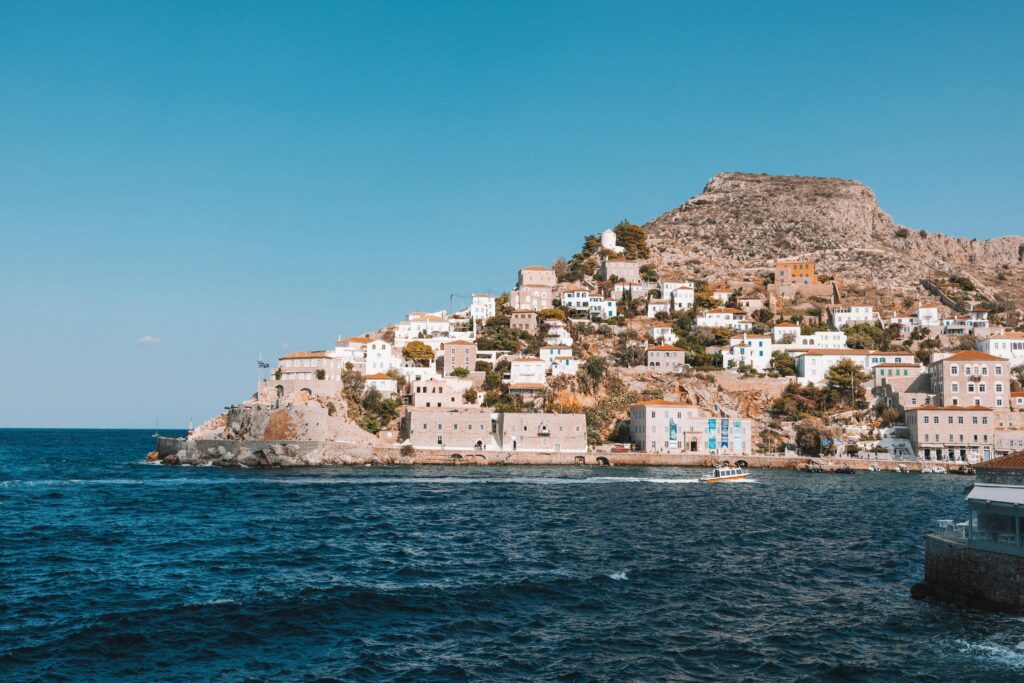
Consider the lovely island of Hydra for a taste of traditional Greece that’s just a two-hour ferry ride from Athens. For many years, the artistic community been drawn to this town because of its cobblestone streets, white-washed houses decorated with bougainvillea, and historic mansions.
Walking is enjoyable on the lovely car-free island; take a leisurely stroll around the bustling port area and don’t miss the early 19th-century cannons along the waterfront. Donkeys are the primary means of transportation on the island if you need to go somewhere, and water taxis will be happy to take you to a remote beach with glistening pure water.
Hydra is particularly appealing to cat lovers because of its reputation for having friendly feline residents who are always up for a good piece of seafood.
21. Vikos Gorge, Greece:
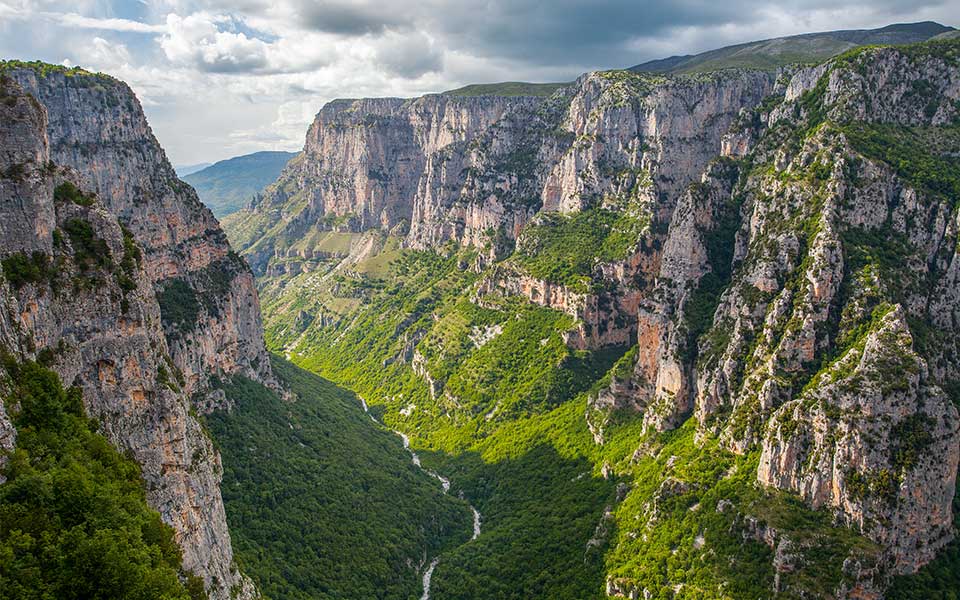
The Víkos Gorge is another of Greece’s top natural attractions. The Grand Canyon of Greece the name given to this amazing natural feature, less well-known than the Samara Gorge on Crete previously discussed. The gorge is a section of the broader Vikos-Aoös National Park and a UNESCO World Heritage site.
One of the most breathtaking and easily accessible natural sites in the northwest region of Greece is the canyon, which is an incredible 1,000 meters deep. One of the greatest spots to simply observe the gorge is from a lookout, and Oxya Viewpoint offers views into the deepest portion of the gorge.
A well-marked 13-kilometer hiking track descends into the canyon and climbs back up again for the more daring. Vikos is where the trek finishes, having begun at Monodendri. You can take a cooling dip in the freezing Voidomatis Springs halfway through. Most hikers find the trail to be somewhat challenging, taking four to five hours to finish.
For more information,click here.
Visit our website Travel India Info, for more places to visit during vacations or mail us at info@travelindiainfo.com. We will be happy to assist you. Happy Travelling!!
Recent Posts
Europe Travel Guide: Best Places to Visit & Explore
15 Best Amazing Places to Explore in Scotland
9 Best Amazing Day Trip To Explore from Kyoto


